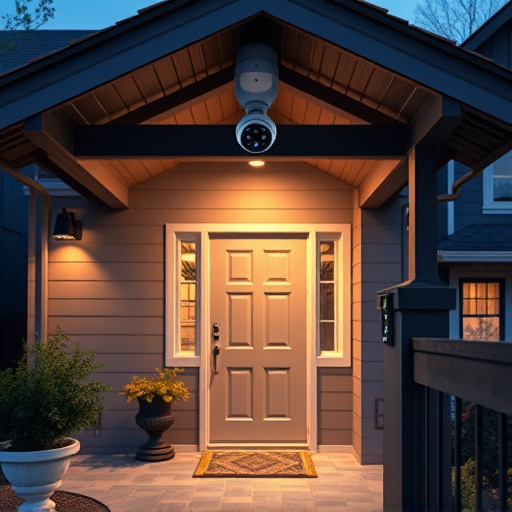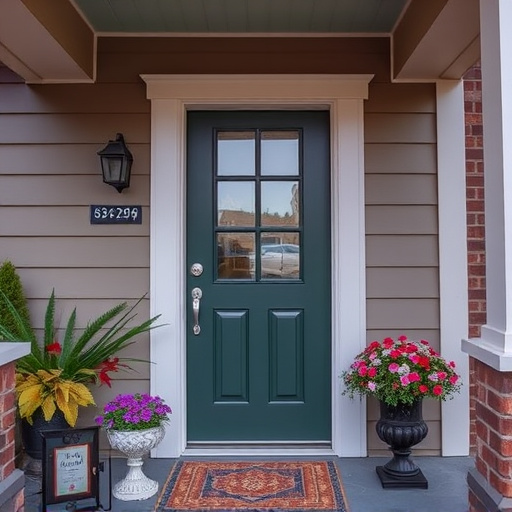Smart home devices offer a comprehensive solution for improving home safety by integrating door/window sensors, cameras, smart thermostats, lighting controls, and outdoor motion sensors. Identify specific risks and select tailored tools like motion sensors, smoke alarms, and automated systems based on lifestyle needs. Set up platforms (e.g., Alexa, Google Home) and configure devices, schedules, and automation for optimal performance. Implement secure access protocols with unique passwords, multi-factor authentication, and encrypted data transmissions. Integrate smart devices with emergency services for automatic alerts upon detecting hazards or unusual activities, ensuring continuous home safety improvement through regular maintenance.
“Enhance your home’s safety and security with the power of smart technology! This beginner’s guide offers practical insights on leveraging smart home devices for a comprehensive safety network. From understanding essential features like motion sensors and door locks, to setting up a personalized system, we’ll walk you through each step. Learn about secure access protocols, integration with emergency services, and device selection tailored to your needs. Discover how to transform your house into a smart fortress, making it safer for you and your family.”
- Understanding Smart Home Safety Features
- Choosing the Right Devices for Your Needs
- Setting Up and Configuring Your System
- Creating Secure Access Protocols
- Integrating Smart Home with Emergency Services
Understanding Smart Home Safety Features

Smart home devices offer a range of features designed to enhance your home’s security and safety. Understanding these capabilities is key for any beginner looking to improve their home safety. Many smart home systems start with basic door and window sensors that alert you when an unauthorized entry is detected, allowing quick response times. Advanced systems can provide real-time video feeds from cameras placed around your property, giving you remote visibility and peace of mind.
Additionally, smart thermostats and lighting controls can aid in security by learning your habits and adjusting settings automatically. Motion sensors for outdoor areas, linked to lighting and camera systems, deter potential intruders while also capturing activity for later review. By integrating these features seamlessly, you create an intelligent environment that significantly boosts how to improve home safety, providing both physical and digital layers of protection.
Choosing the Right Devices for Your Needs

When enhancing home safety with smart devices, understanding your specific needs is crucial. Start by identifying potential risks and areas that require monitoring, such as entry points, fire hazards, or elderly relatives’ well-being. This will help you select the right tools for the job. For instance, motion sensors are ideal for detecting intruders or preventing unauthorized access, while smart smoke alarms can provide advanced warning during emergencies.
Consider your lifestyle and daily routines too. If you have a busy schedule, automated lighting systems and voice assistants can simplify tasks and add convenience. For families with young children or pets, cameras with real-time alerts offer peace of mind. By matching devices to your unique requirements, you’ll create an integrated smart home system that effectively improves how to improve home safety.
Setting Up and Configuring Your System

Setting up a smart home system is an exciting journey towards enhancing your home’s security and comfort. To begin, choose a platform that suits your needs, whether it’s a centralized hub or individual devices controlled via an app. Popular options include Amazon Alexa, Google Home, or Apple HomeKit. Next, purchase compatible devices like motion sensors, smart locks, cameras, and lights.
Follow the manufacturer’s instructions for each device to ensure optimal performance. This typically involves downloading the accompanying app, creating an account, and connecting your devices to your home network. Configure settings such as scheduling, automation rules, and notification preferences. For example, set up motion sensors to trigger alarms or notifications when activity is detected, allowing you to monitor your home remotely and improve how to improve home safety.
Creating Secure Access Protocols

Creating secure access protocols is a vital step in enhancing your home’s safety when introducing smart devices. Start by assigning unique passwords for each device, ensuring they are complex and regularly updated. Consider implementing multi-factor authentication, where additional verification is required beyond a password, such as a fingerprint or facial recognition. This adds an extra layer of security.
Enable encryption on all devices and networks to protect data transmission. Smart home systems often connect to your home network, so ensuring this is secure is paramount. Regularly review and update access permissions; only allow trusted individuals access and ensure devices are set up with proper privacy settings. By following these steps, you can significantly improve how to improve home safety in your smart home setup.
Integrating Smart Home with Emergency Services

Integrating smart home devices with emergency services is a game-changer for enhancing home safety, especially for beginners delving into this realm. By setting up automatic alerts and notifications, these systems can notify local emergency services immediately upon detecting unusual activities or hazards, such as smoke or carbon monoxide. This real-time communication ensures prompt response times, potentially saving lives and minimizing property damage.
To improve home safety through smart integration, users should consider installing compatible devices and configuring them to send alerts to local emergency centers. Many modern systems allow for customization, enabling homeowners to set specific triggers and preferences. Regular updates and maintenance are also crucial, as they ensure these devices remain effective tools in safeguarding your space.
Smart home devices offer a revolutionary way to enhance your home’s security, providing peace of mind and improved safety for you and your family. By understanding the various features, choosing suitable devices, setting up a secure system, and integrating emergency services, beginners can efficiently navigate this technology. These practical insights empower homeowners to take control of their safety and explore the full potential of smart home automation. Implement these steps, and you’ll be well on your way to creating a safer, more connected living space.






